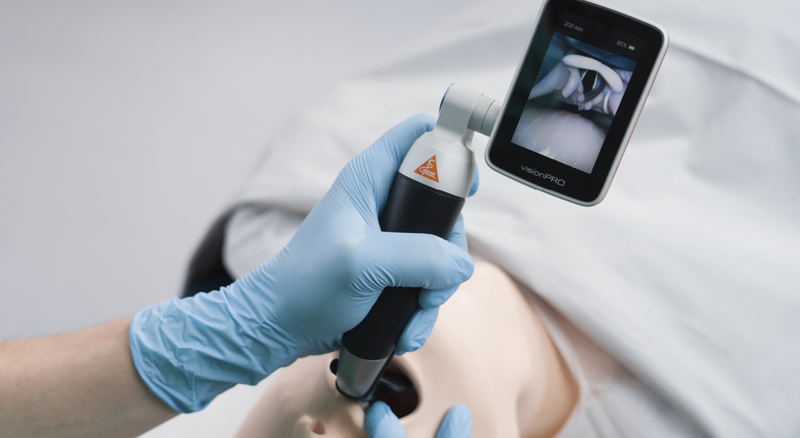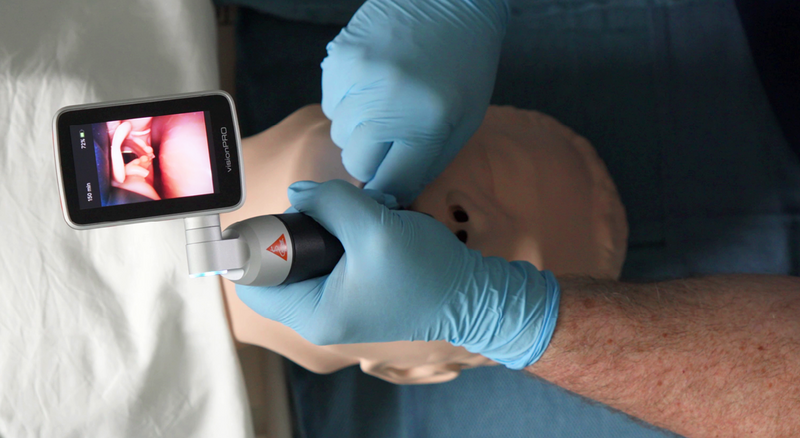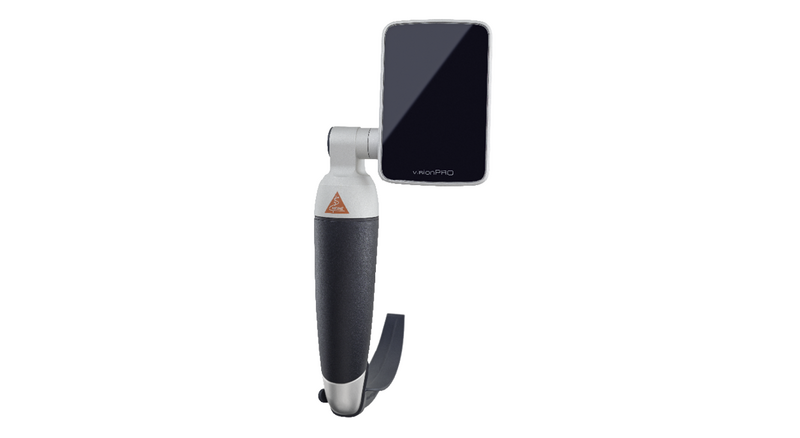Intubating with the HEINE visionPRO video laryngoscope
The visionPRO video laryngoscope combines direct and indirect laryngoscopy in a single device. Thanks to the live view on the display, all members of the medical team can clearly follow the progress of the intubation process at the same time. This enables improved communication, targeted assistance (e.g. the BURP manoeuvre), and immediate intervention if necessary.
In these video sequences, Dr Jim DuCanto, an anaesthetist and a world-renowned airways management trainer, demonstrates one step at a time how to perform endotracheal intubation with the video laryngoscope and explains what needs to be considered.
1. Getting the patient into the ideal position
Before starting intubation, the patient must be positioned correctly. Proper positioning is very important, as improper patient placement could make intubation more difficult.
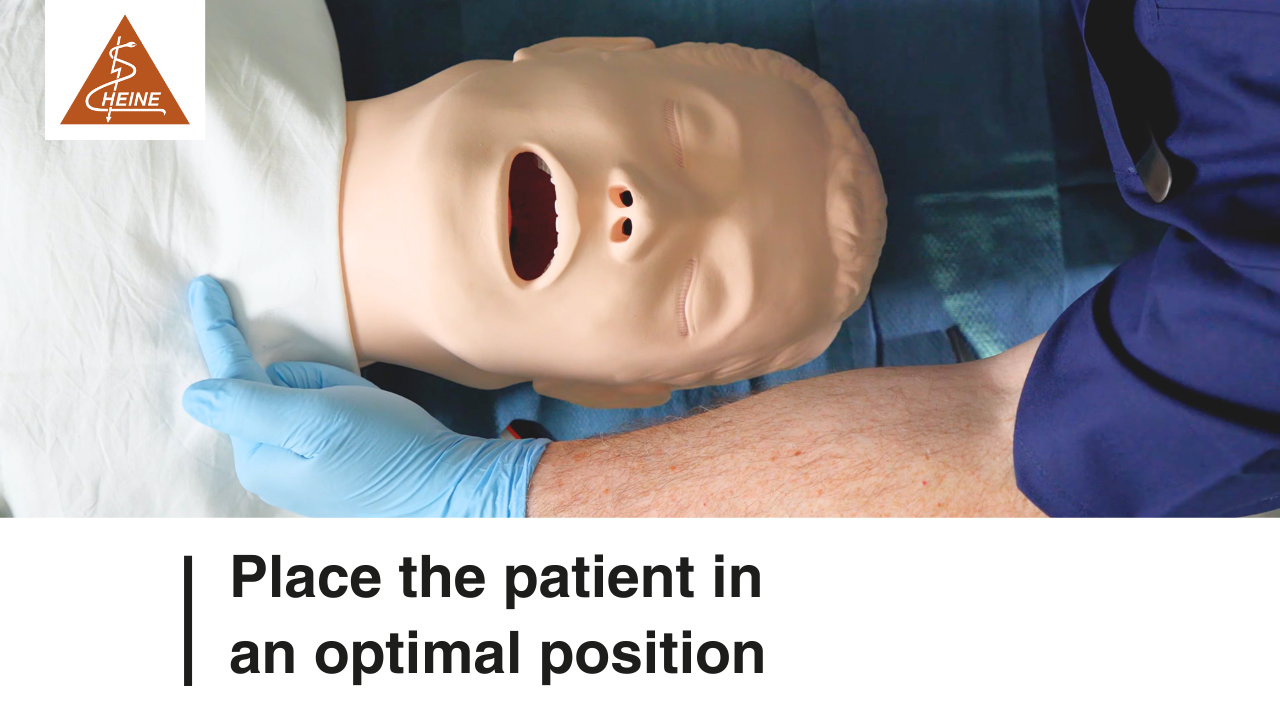
2. Inserting the video laryngoscope
Once the patient is in the proper position, the video laryngoscope can be inserted into the oral cavity. Dr DuCanto positions the laryngoscope so that the flange of the Macintosh blade pushes the tongue sideways from right to left.
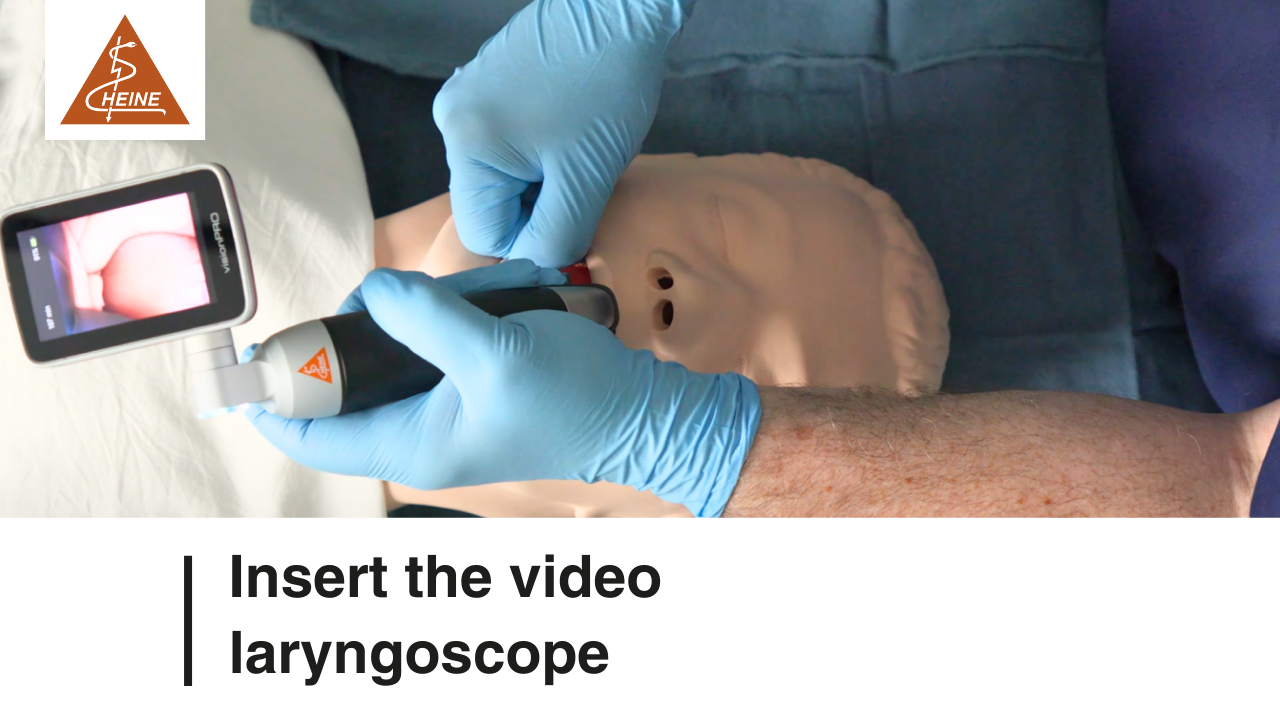
3. Correct placement of the video laryngoscope
When inserting the video laryngoscope, the glottic opening should be clearly visible to ensure the device is correctly aligned with the patient’s airways. Dr DuCanto proceeds from the base of the tongue into the vallecula. (The laryngoscope should be moved very carefully to minimise the risk of injuring the patient.)
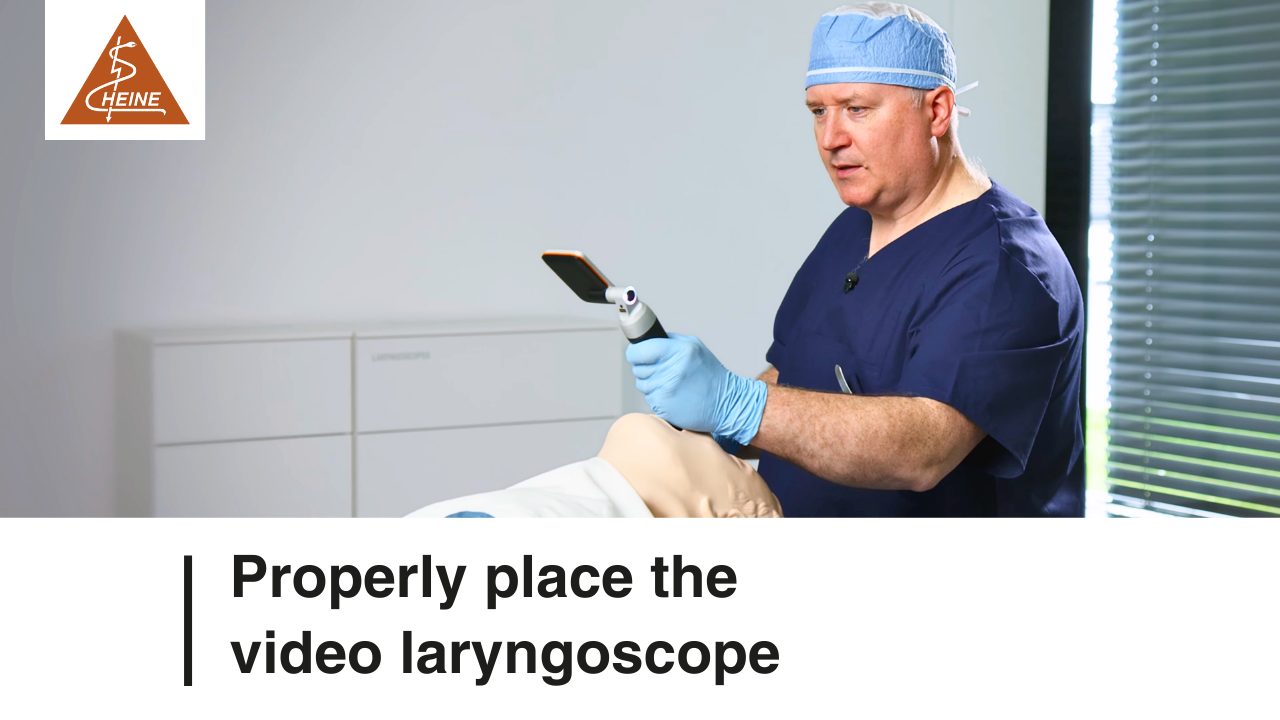
4. Inserting the endotracheal tube
The endotracheal tube is guided past the laryngoscope on the right. The correct placement during the process is observed on the screen of the video laryngoscope. The stylet can then be removed.
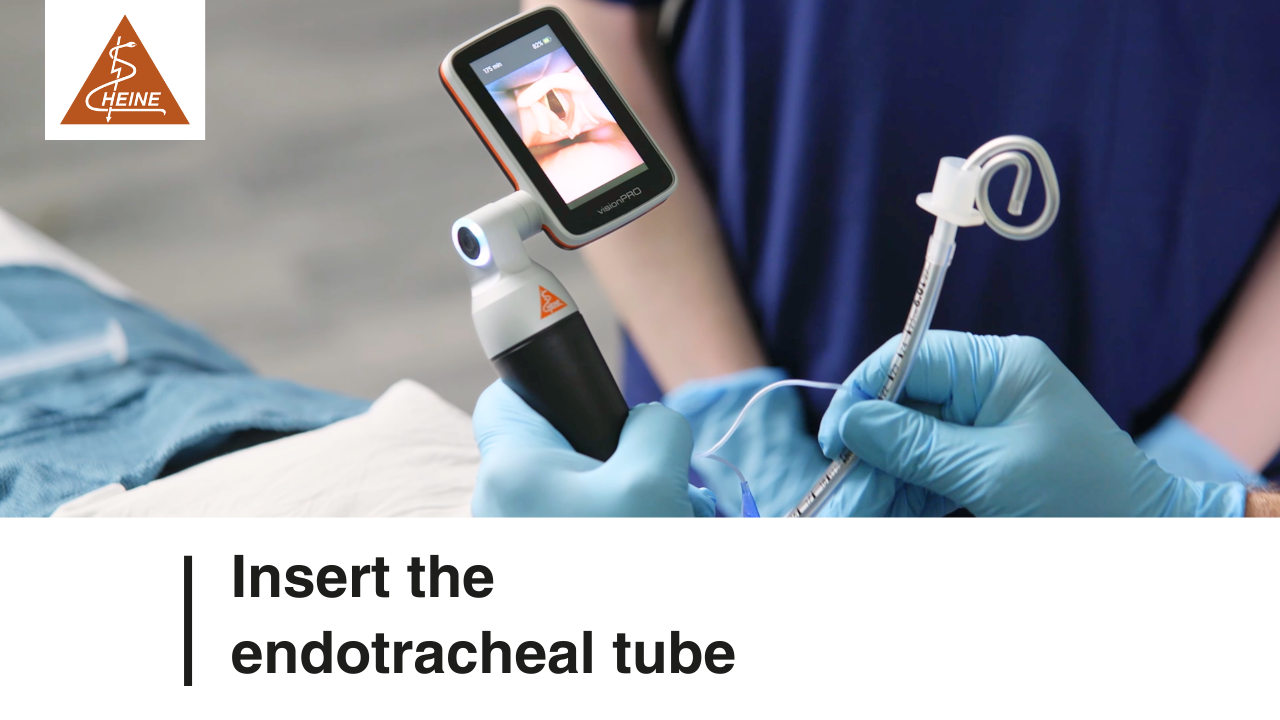
5. Confirming that the endotracheal tube is in the correct position
The laryngoscope is carefully rotated out of the mouth and throat.
Once the endotracheal tube has been inserted, it must be verified that it is in the correct position in the trachea to ensure adequate ventilation and to avoid complications.
This is checked by using a stethoscope to listen to the sounds of the patient breathing on both sides of their chest on the one hand, and using capnometry to monitor the carbon dioxide levels in the air the patient exhales on the other.
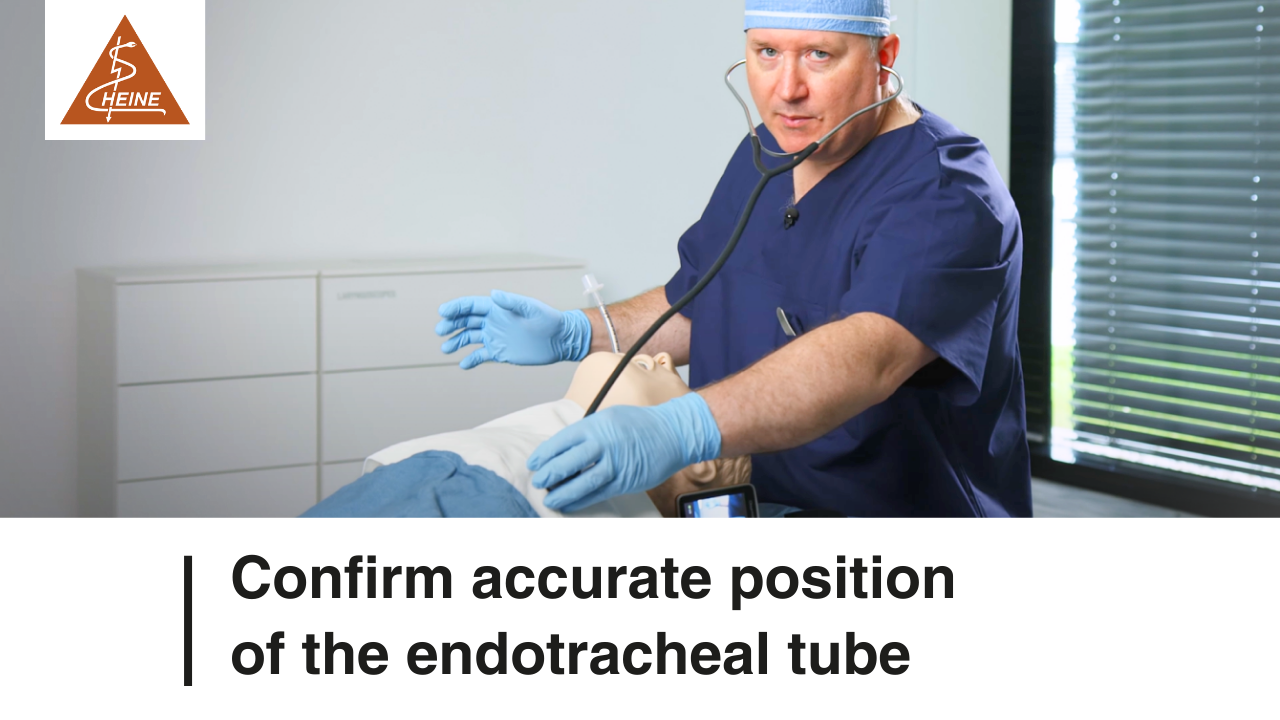
More information
Disclaimer:
Intubation is a complex medical procedure that must be performed by trained medical professionals with the necessary expertise. The method and procedure shown may vary depending on the specific video laryngoscope and the individual needs of the patient. Always follow the relevant user manual and your establishment’s protocols and guidelines for intubation procedures.
